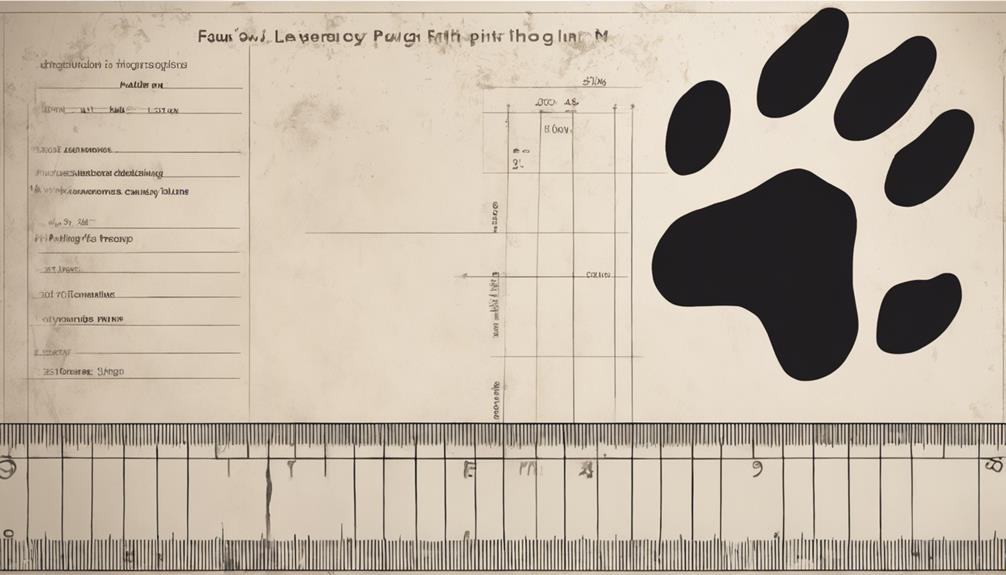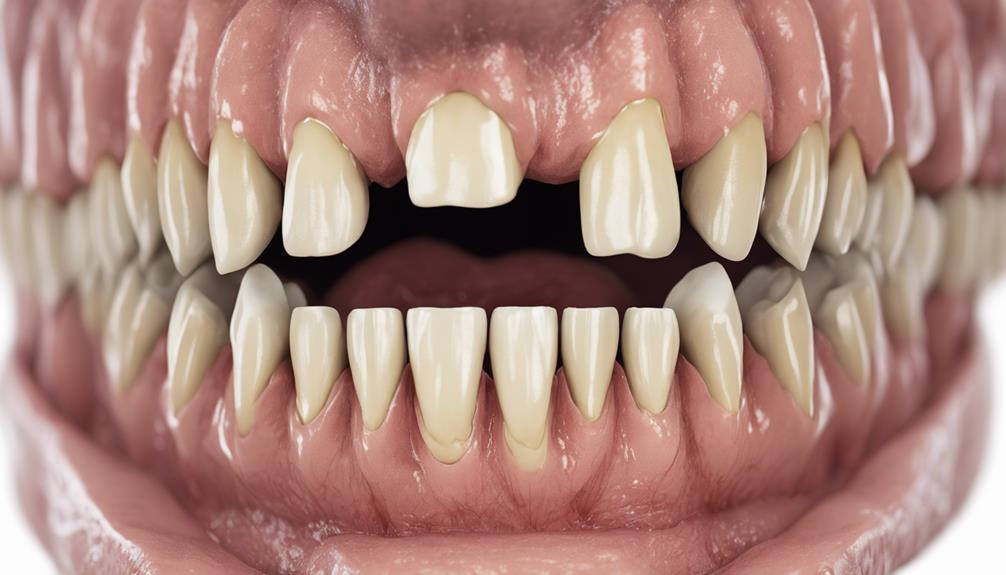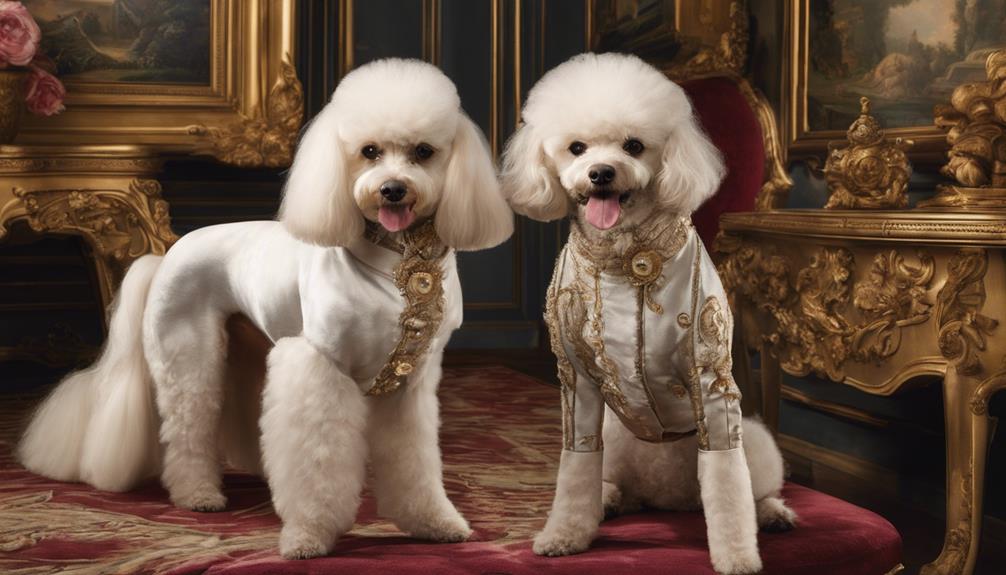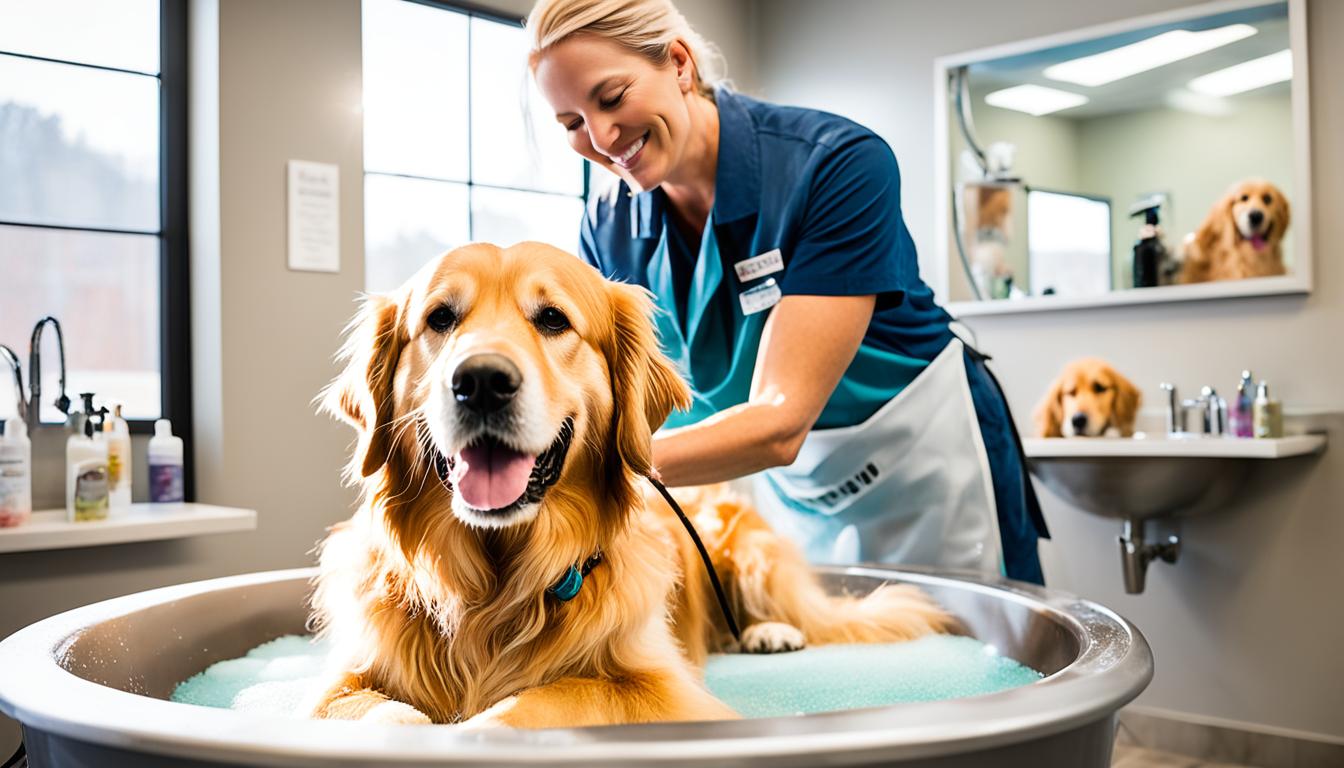When attempting to figure out your dog’s age, it is crucial to consider different factors like their teeth, coat, eyes, mobility, and genetics. Noticing changes in puppy teeth, fur, eye health, mobility patterns, and breed characteristics can offer valuable information about your pet’s true age.
By paying attention to these different aspects, you can gain a better understanding of how old your furry companion truly is. This comprehensive approach allows you to assess various indicators that may reveal more about your dog's age and overall health.
Key Takeaways
- Check for tooth development and condition for age estimation.
- Examine coat color changes and skin condition for aging signs.
- Look for cloudiness, color changes, or opacity in the eyes.
- Monitor gait, exercise reluctance, and mobility changes.
- Consider genetics, breed traits, and predispositions for age insights.
Assessing Dental Health for Age
When evaluating a dog's age, one effective method is to assess their dental health, which can provide valuable insights into their overall age and development. Puppies up to four weeks old typically don't have teeth, while those between four and eight weeks sport needle-sharp temporary teeth. Around three to four months old, permanent teeth begin to emerge in dogs. Changes in a dog's teeth such as stains, plaque, tartar buildup, and tooth loss can serve as indicators of aging. Vets are skilled at estimating a dog's age by examining their teeth condition and developmental milestones.
Over the years, tartar accumulation and tooth wear offer important clues about a dog's age progression. By keeping an eye on their dental health, pet owners can gain a better understanding of their furry companion's age and overall well-being. Checking for signs of aging in a dog's teeth is an insightful way to monitor their journey from a playful pup to a wise old canine.
Examining Coat and Skin Condition

Monitoring your dog's coat and skin condition is another insightful way to gauge their age accurately, especially as gray fur typically starts appearing on most dogs between seven and ten years old. Changes in coat color, like gray or white fur on the muzzle, chest, or haunches, can be signs of aging. However, it's important to bear in mind that stress or anxiety can also cause gray fur, so it's not always solely due to aging. Early appearance of gray fur doesn't always indicate old age in dogs, as various factors can contribute to these changes. Regular monitoring of changes in coat color and condition is vital to evaluating your dog's age accurately.
- Gray fur may first appear on your dog's muzzle.
- Changes in coat color on the chest or haunches can also signify aging.
- Stress or anxiety might lead to premature gray fur, impacting age evaluation.
- Regularly checking your dog's coat condition aids in identifying signs of aging.
Observing Eye Health and Clarity
Observing the clarity and health of your dog's eyes can provide valuable insights into their age and potential eye conditions. Cloudy or bluish eyes in senior dogs may indicate aging or common eye issues such as lenticular sclerosis or cataracts. Lenticular sclerosis, a typical aging change, can cause cloudy eyes in older dogs, while cataracts may lead to white, opaque eyes in aging pets. Monitoring your dog's eye health regularly is crucial, as around half of dogs over nine years old experience some form of eye problem, with the likelihood of eye issues increasing in dogs over 13 years old.
| Eye Condition | Description | Associated with |
|---|---|---|
| Cloudy eyes | Eyes appear hazy or foggy, indicating potential age-related changes or eye conditions | Aging dogs |
| Lenticular sclerosis | Normal age-related change causing a bluish hue in the eyes | Senior dogs |
| Cataracts | Result in white, opaque eyes, impairing vision and common in aging dogs | Eye conditions |
Monitoring Mobility and Activity Levels

To gauge your dog's age accurately, assess their mobility and activity levels through subtle changes in their daily movements and energy levels. Monitoring mobility and activity levels is essential in understanding your dog's aging process. Here are key points to take into account:
- Changes in Gait: Keep an eye out for alterations in how your dog walks or moves. Any irregularities in their gait could indicate underlying joint issues or age-related changes.
- Reluctance to Exercise: Note if your dog shows less interest in physical activities they once enjoyed. A hesitation to exercise might signify discomfort or decreased mobility.
- Signs of Stiffness or Limping: Watch for signs of stiffness or limping, especially after periods of rest. These could be symptoms of joint problems that affect your dog's mobility.
- Balance Issues: Pay attention to how well your dog maintains balance while walking or standing up. Balance issues could point to age-related changes impacting mobility.
Considering Genetics and Breed Characteristics
Genetics and breed characteristics play a key role in determining a dog's aging process and potential health outcomes. The genetic makeup of a dog contributes greatly to its aging rates, life expectancies, and susceptibility to certain health issues. Different breeds exhibit varying age-related changes and may have specific genetic predispositions that impact their lifespan. Understanding these breed characteristics is essential in predicting and addressing age-related conditions effectively. By considering genetics and breed traits, owners can tailor their care requirements to meet the specific needs of their furry companions.
| Factors | Implications |
|---|---|
| Aging Rates | Genetic factors influence how quickly a dog ages. |
| Life Expectancies | Breed characteristics play a role in determining how long a dog is likely to live. |
| Health Issues | Genetic predispositions can impact the onset of age-related health conditions. |
| Age-related Changes | Understanding breed traits helps predict and manage age-related changes. |
| Care Requirements | Tailoring care based on genetics and breed characteristics is essential for ideal health. |
Frequently Asked Questions
Is There a Way to Tell a Dog's Exact Age?
Yes, there's a precise method to determine a dog's exact age. DNA methylation science serves as a reliable clock for age estimation. Studies show that methylation changes in DNA can accurately predict a dog's calendar age.
The Launch Age Test, which utilizes DNA methylation, offers a cutting-edge solution for determining a dog's age. Priced at $159, this test provides accurate and insightful age information for dogs.
How Can You Estimate a Puppy's Age?
We estimate a puppy's age by examining its teeth development. Up to four weeks old, puppies have no teeth, then they get needle-sharp temporary ones between four and eight weeks. Permanent teeth start growing around three to four months.
What Age Is Really Old for a Dog?
As for what age is really old for a dog, it varies with breed size. Small breeds may be considered old around 10 years, while larger breeds could be seen as old at 6-8 years.
Factors like abnormal cell growth and size-related health issues can accelerate aging. Signs of old age include cloudy eyes, gray hair, loose skin, and behavioral changes.
Understanding this helps in providing appropriate care and recognizing age-related changes in our furry companions.
How to Calculate a Dogs Age?
We determine a dog's age by considering various factors, such as teeth condition, coat color changes, and muscle tone. These indicators help us estimate their age accurately.
Additionally, DNA testing, like the Embark Age Test, can provide precise calendar age estimates using DNA methylation.
Can Knowing the Age of a Dog Help Convince Your Parents to Get a Dog?
Knowing the age of a dog can be a game-changer when trying to convince parents to get a dog. Puppies require more time and effort, while older dogs may be calmer and more low-maintenance. Demonstrating the benefits of adopting an older dog could sway hesitant parents.
Conclusion
To sum up, by evaluating your dog's dental health, coat and skin condition, eye health, mobility, and genetics, you can get a good idea of their true age.
Just like a well-worn book, your furry friend's unique characteristics and behaviors tell a story of their life journey.
Keep an eye on these key indicators to make sure your dog is happy, healthy, and aging gracefully.










